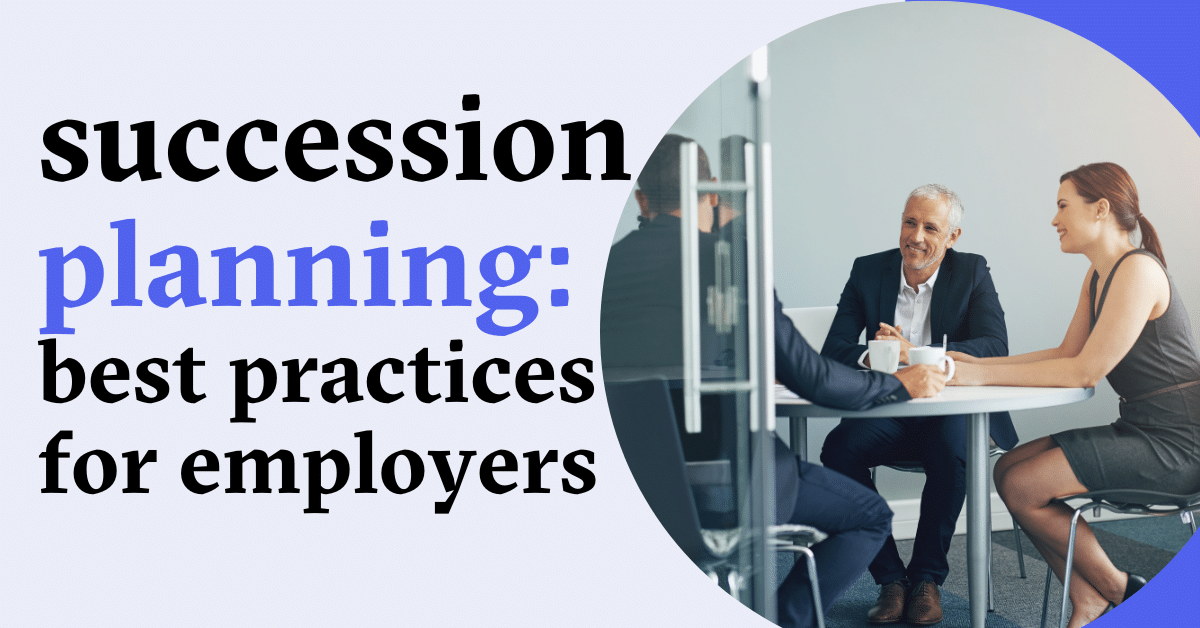Succession Planning Best Practices for Employers
July 3, 2024
What is Succession Planning?
Succession planning is a strategic initiative aimed at identifying and preparing future leaders within your organization. This process involves recognizing critical roles, evaluating internal talent, and developing action plans to ensure a seamless transition when current leaders vacate their positions. In essence, succession planning is about future-proofing your company by ensuring that key positions are always effectively filled.
Why is Succession Planning Important?
Succession planning is crucial for several reasons:
- Business Continuity:It ensures that your organization can continue to operate smoothly despite any unexpected departures or retirements.
- Leadership Stability:Well-prepared successors reduce the risk of operational disruption.
- Employee Development:By focusing on internal talent, you create a culture of growth and development, boosting employee morale and retention.
- Strategic Alignment:A succession plan aligned with your company’s long-term goals helps in achieving sustained business success.
What Are the Challenges of Succession Planning?
Despite its advantages, succession planning comes with its own set of challenges:
- Maintaining Morale:Open discussions about succession can sometimes negatively impact employee morale. Transparency is key to mitigating misunderstandings and keeping the team engaged.
- Adapting to Change:The evolving nature of work, driven by technological changes and market trends, can make succession planning complex. It requires forward-thinking and flexibility.
- Regular Updates:Succession plans need to be updated regularly to remain relevant. This can be time-consuming but is essential for accuracy and effectiveness.
- Identifying the Right Talent:Spotting high-potential employees who have the skills and potential to grow into leadership roles can be challenging. Objective evaluation criteria and tools should be employed.
Best Practices for Succession Planning
Implementing succession planning best practices can ensure the effectiveness and success of your strategy. Here are some key practices:
- Start Early:Succession planning should be a proactive process and not left until the last minute. Early planning gives you ample time to identify and develop potential leaders.
- Be Transparent:Maintain open communication with your team about the succession planning process. Transparency helps in managing expectations and maintaining morale.
- Use Objective Criteria:Develop clear and objective criteria for evaluating potential successors. This reduces bias and ensures that the most qualified candidates are identified.
- Provide Development Opportunities:Invest in training and development programs to prepare potential successors for future roles. This could include mentoring, coaching, and stretch assignments.
- Regularly Update the Plan:A succession plan should be a living document that is regularly reviewed and updated to reflect any changes in the organization or its strategic goals.
- Involve Key Stakeholders:Collaborate with key stakeholders, including senior leadership and HR, to ensure the succession plan is comprehensive and aligned with the organization’s goals.
What Does a Good Succession Plan Look Like?
A robust succession plan typically involves the following components:
- Assessment
- Identify Critical Positions: Determine the roles essential for the company’s success.
- Evaluate Requirements: Analyze the skills and competencies needed for these roles.
- Risk Assessment: Identify positions with the highest vacancy risks.
- Evaluation
- Select High-Potential Employees: Choose employees with the ability and potential to fill critical roles.
- Competency Models: Develop models outlining the necessary skills for future leaders.
- Gap Analysis: Identify gaps between current skills and future requirements.
- Development
- Knowledge Capture: Document key knowledge held by current leaders.
- Development Programs: Create career development plans, including training, mentoring, and special projects.
- Handover Documentation: Ensure all contextual tasks and responsibilities are well-documented.
- Implementation and Monitoring
- Action Plans: Develop clear action plans for transitioning roles.
- Regular Reviews: Schedule regular reviews to update the plan and assess progress.
- Feedback Mechanisms: Implement feedback systems to continuously improve the plan.
Download Our Succession Planning Template Today!
Secure your company’s future by implementing a solid succession plan. Download our comprehensive Succession Planning Template today and get started on creating a seamless leadership transition strategy.
share this blog
STAY CONNECTED
Sign up for our newsletter for the latest Tesseon information.
Related Blogs
What our clients are saying about us
Disclaimer: The information provided on this blog page is for general informational purposes only and should not be considered as legal advice. It is advisable to seek professional legal counsel before taking any action based on the content of this page. We do not guarantee the accuracy or completeness of the information provided, and we will not be liable for any losses or damages arising from its use. Any reliance on the information provided is solely at your own risk. Consult a qualified attorney for personalized legal advice.

